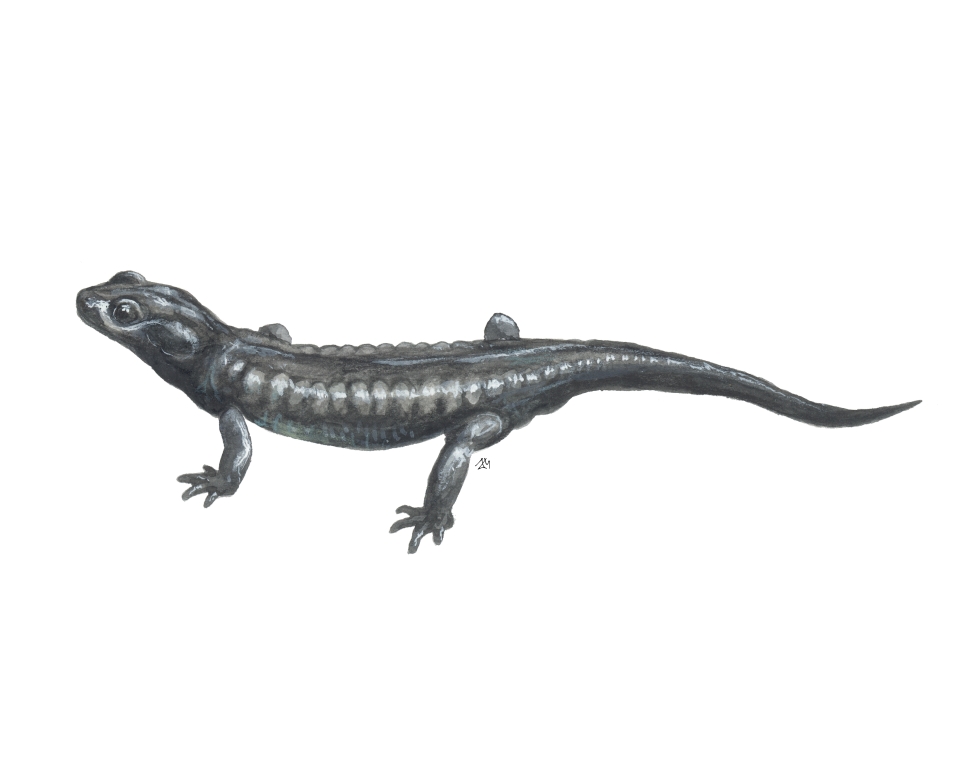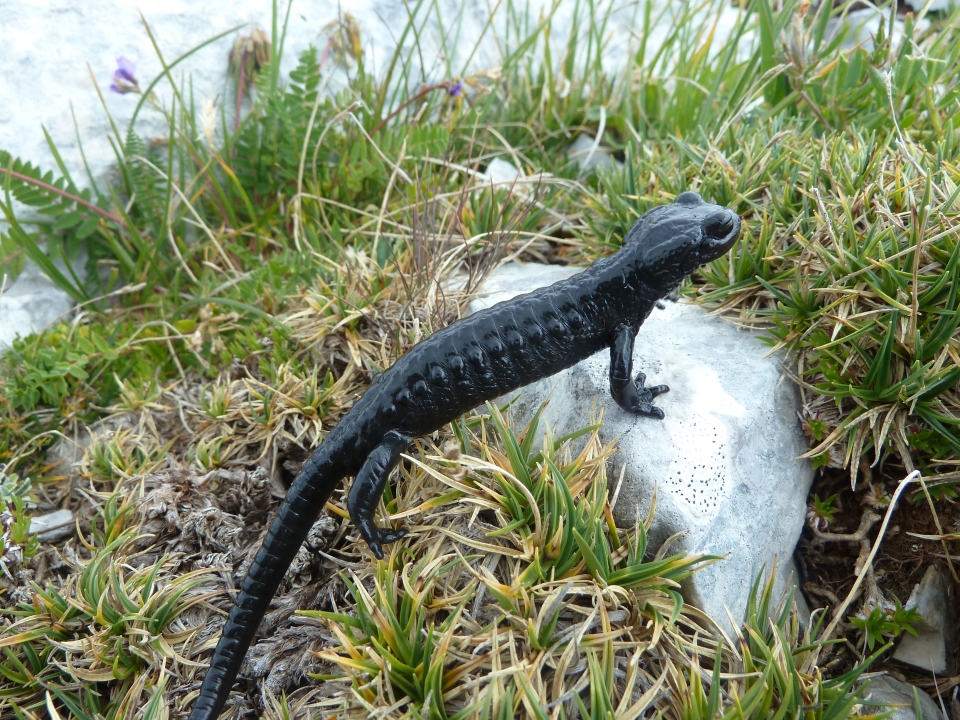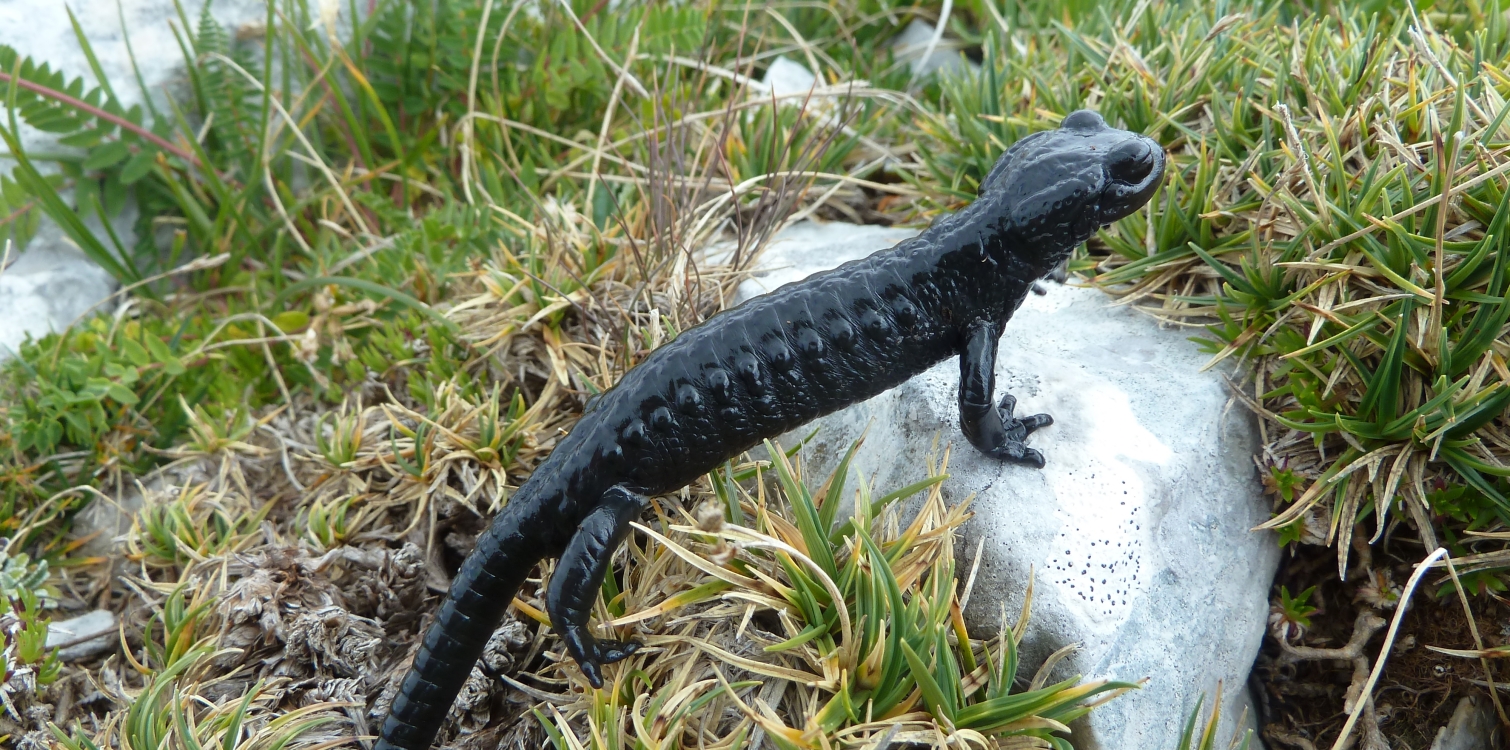Completely black, gray, or even brownish, the salamander resides in crevices of walls and among roots in dense forests and alpine meadows of our Alpine and predominantly Dinaric region. High humidity keeps its body moist, as, like all amphibians, it breathes through its skin.

Alpine salamander (Salamandra atra)
| Size |
|
| Height |
|
| Diet |
|
| Habitat |
|
| Kingdom |
|
| Phylum |
|
| Class |
|
| Order |
|
| Family |
|
| Genus |
|
| Species |
|
The alpine salamander is active on humid nights and during the day only when it rains. It feeds on earthworms, snails, centipedes, terrestrial crustaceans, and insects. It is not on the menu for predators, because it is toxic and tastes unpleasant.
Despite having four short legs, its belly still drags along the ground, giving it the appearance of crawling.
During mating, the male deposits a gelatinous capsule containing sperm—called a spermatophore—on the ground. The female collects this capsule with her cloaca during mating. The sperm then travels through her body to fertilize her eggs.
The development of the larvae is particularly interesting, as they do not require water. They develop inside the female's body, where they feed on their own yolk, unfertilized eggs, and special tissue produced by the wall of the female's uterus."

DO YOU KNOW?
- We have observed the alpine salamander in Triglav National Park at Lipanca mountain pasture, in the wider area of Pokljuka, in the Vrata and Trenta valleys, and on Velo Polje...

